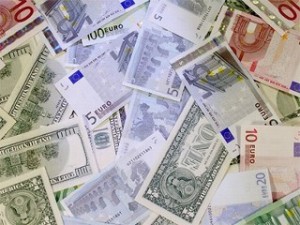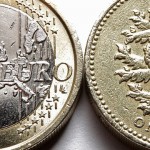 The euro traded little changed against the US dollar, as expansion of the euro area private sector was offset by declining retail sales in December.
The euro traded little changed against the US dollar, as expansion of the euro area private sector was offset by declining retail sales in December.
EUR/USD hit a session high at 1.3529 at 09:40 GMT, after which the pair consolidated at 1.3522 to trade little changed. Support was likely to be received at February 4th low, 1.3494, while resistance was to be encountered at February 4th high, 1.3539.
Eurostat reported today that the euro zone retail sales fell 1.6% in December, exceeding analysts forecast for a 0.7% decline. Novembers reading received a downward revision to a 0.9% gain, from earlier estimates of a 1.4% increase. Retail sales in the 18-nation common currency area declined 1% in December, compared to a year ago, defying analysts projections of a 1.5% increase. Novembers reading was also revised downwards to 1.3% advance from an early estimated 1.6% gain.
At the same time, the market research group, Markit Economics, reported that its euro zone composite output index came in at 52.9 in January, just below the preliminary estimate of 53.2 and up from Decembers reading of 52.1. Data revealed that the gain was mainly driven by growth in the manufacturing sector, where the increase in total new orders and new export business helped production output to reach the highest in almost three years.
The ECB policy makers are set to reconvene in Frankfurt tomorrow and the overall market consensus points that central bankers will either decide to cut rates to near zero or find an alternative decision, such as quantitative easing through bond purchases.
“The euro is on a path of gradual declines,” said Kikuko Takeda, a senior analyst in London at the Bank of Tokyo-Mitsubishi UFJ Ltd., a unit of Japan’s biggest lender by market value, cited by Bloomberg. “The ECB will eventually add to monetary easing, or even if there’s no additional step, it will continue to signal its dovish stance to markets.”
Eurostat reported on Friday that consumer prices in the euro area rose at an annualized pace of 0.7% in January, after a 0.8% increase in the previous month. Analysts had estimated that consumer prices will increase by 0.9% in January. This was a fourth straight reading of inflation under 1%, while the ECB tries to maintain inflation at just below 2%, which added to concerns over the threat of deflation in the euro area.
A separate report revealed that the inflation in the largest economy in the euro zone, Germany, unexpectedly remained steady at 1.2% in January, defying analysts projections of an increase to 1.3%. The low German inflation just added to evidence of weak price pressure in the 18-nation common currency area.
In November, the central bank unexpectedly cut its benchmark interest rate to a record-low 0.25%, after inflation in the euro area slowed its pace to 0.7%. The European Central Bank’s policy makers are scheduled to next meet on February 6th.
The weak inflation rate in the euro zone was mainly driven by a 1.2% slump in energy prices, Friday’s report showed. Core consumer prices, which exclude volatile items such as energy, tobacco and alcohol, however, increased by 0.8% this month, after a 0.7% advance in December.
Meanwhile, yesterday the greenback drew some support, after the US Census Bureau reported that factory orders decreased 1.5% in December, less than the median analysts’ forecast of a 1.8% drop. In November the orders for factory goods rose by 1.8%.
Private sector in the United States probably added 185 000 new jobs in January, following a job gain of 238 000 in December. The official figures are to be released by the Automatic Data Processing Inc. (ADP) at 13:15 GMT today. Better than expected figures will certainly provide support to greenback’s demand.
On the other hand, activity in the services sector in the United States probably increased in January, with the corresponding PMI climbing to a reading of 53.7, after a month ago the index came in at a value of 53.0. The Institute for Supply Management (ISM) will announce the official reading at 15:00 GMT today.
Elsewhere, GBP/USD hit a session low at 09:57 GMT, after which consolidation followed at 1.6274, losing 0.31% for the day. Support was likely to be received at February 4th low, 1.6258, also the pair’s weakest since December 17th, while resistance was to be encountered at February 4th high, 1.6344.





